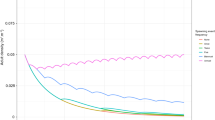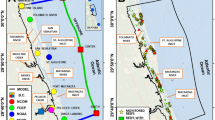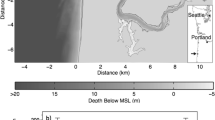Abstract
A hydrodynamic–oyster population model was developed to assess the effect of changes in freshwater inflow on oyster populations in Galveston Bay, Texas, USA. The population model includes the effects of environmental conditions, predators, and the oyster parasite, Perkinsus marinus, on oyster populations. The hydrodynamic model includes the effects of wind stress, river runoff, tides, and oceanic exchange on the circulation of the bay. Simulations were run for low, mean, and high freshwater inflow conditions under the present (1993) hydrology and predicted hydrologies for 2024 and 2049 that include both changes in total freshwater inflow and diversions of freshwater from one primary drainage basin to another.
Freshwater diversion to supply the Houston metropolitan area is predicted to negatively impact oyster production in Galveston Bay. Fecundity and larval survivorship both decline. Mortality from Perkinsus marinus increases, but to a lesser extent. A larger negative impact in 2049 relative to 2024 originates from the larger drop in fecundity under that hydrology. Changes in recruitment and mortality, resulting in lowered oyster abundance, occur because the bay volume available for mixing freshwater input from the San Jacinto and Buffalo Bayou drainage basins that drain metropolitan Houston is small in comparison to the volume of Trinity Bay that presently receives the bulk of the bay's freshwater inflow. A smaller volume for mixing results in salinities that decline more rapidly and to a greater extent under conditions of high freshwater discharge.
Thus, the decline in oyster abundance results from a disequilibrium between geography and salinity brought about by freshwater diversion. Although the bay hydrology shifts, available hard substrate does not. The simulations stress the fact that it is not just the well-appreciated reduction in freshwater inflow that can result in decreased oyster production. Changing the location of freshwater inflow can also significantly impact the bay environment, even if the total amount of freshwater inflow does not change.
Similar content being viewed by others
Author information
Authors and Affiliations
Rights and permissions
About this article
Cite this article
POWELL, E., KLINCK, J., HOFMANN, E. et al. Influence of Water Allocation and Freshwater Inflow on Oyster Production: A Hydrodynamic–Oyster Population Model for Galveston Bay, Texas, USA. Environmental Management 31, 0100–0121 (2003). https://doi.org/10.1007/s00267-002-2695-6
Issue Date:
DOI: https://doi.org/10.1007/s00267-002-2695-6




